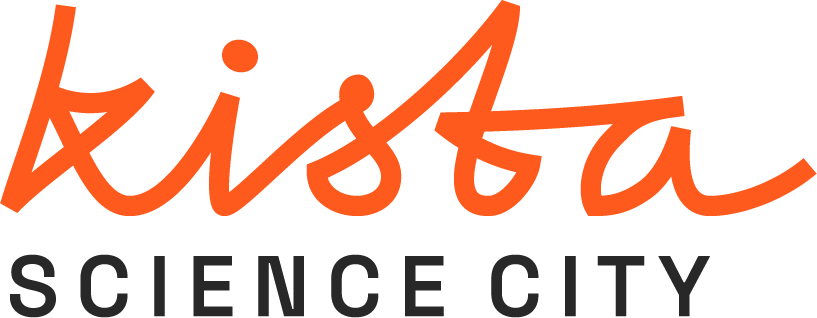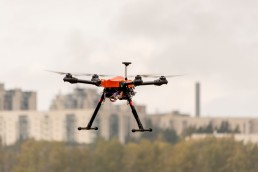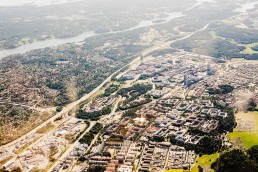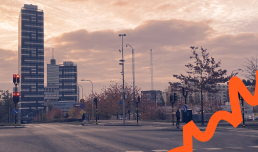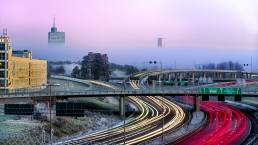Cybersecurity Program

Cybersecurity
Unlocking business potential with our cybersecurity program
Welcome to our business development program focused on enhancing cybersecurity in the medtech industry. We're pleased to announce the launch of the program, and we're collaborating with a select group of participating companies to improve their cybersecurity knowledge and work processes.
Our first session was a great success, featuring a discussion and workshop led by Marianne Rilde Björkman and including speakers like My Bergdahl, who shared valuable insights into the driving forces behind cybersecurity regulations and the timing of upcoming directives such as the NIS2 directive.
Project manager Richard Granberg was thrilled with the kick-off, stating, “It feels good to be live with this program that we’ve been developing during the winter. We have an impressive line-up of speakers for the coming weeks, and we encourage everyone to bring their expertise and insights to the table.”
Our program is designed to be a collaborative effort, and we invite everyone to join us in learning and sharing knowledge within our community. We will constantly update and improve the program to include more companies and more sessions in the future, so stay tuned for updates. If you’re interested in getting involved, please don’t hesitate to reach out to Richard.
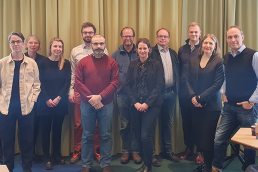

Kista takes the lead in smart drone services
Kista takes the lead in smart drone services
Drones will soon be serving customers, citizens, businesses, and authorities with a wide range of revolutionary new services.
Kista Science City hosts one of Sweden’s largest knowledge clusters when it comes to new mobility. A new project will prepare cities for the next phase in this fast-growing drone economy. The tech scene in Stockholm has millions of reasons to get excited.
Drone-based services are expected to be game-changing in the coming years: The potential is enormous in areas as medical transport, emergency response, traffic monitoring and delivery of food and packages, just to name a few. On top of that: using drones can be both effective and sustainable.
But implementing this at a large scale is complex. While the technology for drone services advances quickly, the ecosystem needed for the” lower airspace mobility revolution” isn’t in place. Yet.
That’s what’s most probably about to change in the upcoming years, as the drone market is expected to boom by 2030.
Funding, expertise and tests
Stockholm will take a leading role in a three-year project to identify, test, and evaluate solutions linked to urban drone services in European cities.
The goal is to develop tools for adapted urban planning, to evaluate lifting and landing sites in an urban environment, and to build an ecosystem that pave the way for drone traffic to become part of a multimodal transport system.
The City of Stockholm is collaborating with Kista Science City and the Swedish Air Navigation Services in a consortium that will be focusing on funding, expertise, and implementation of tests.
– New strategies and tools are needed to be able to handle the increasing number of drones in urban areas. We are extremely proud that Stockholm has been selected as one of three European cities to actively lead the development of shaping the future of mobility, says Karin Bengtsson, CEO, Kista Science City.
Contact us if you want to be part of the new drone economy
If you are a tech startup developing products or services related to drones, contact us (Eleonor Sjödin Turah), to be in the loop.
The startup Aerit is one of the tech companies part of this fast-growing eco-system. Founder and CEO, Alexander Perrien, feels the vibrating excitement for drone services in Kista:
– Most companies we have met understand the immense economic and social value autonomous robots can bring and are actively working on solutions and supporting products, he says.
Drones bring endless potential for society
Alexander paints a picture of almost endless potential for society as it fully taps into the possibilities:
– Drones themselves are essentially highly mobile sensor suites, and there is little that prevents us from offering the data we collect as a service in the future. Imagine on the way back from dropping off groceries to a local balcony, the drone stops by a local water reservoir to scan for excess nutrients, sample the air near a local production facility, or update a 3D map of new development. Highly accurate hyper-local data can be provided on demand.
– We are building a future where, at the tap of a button, businesses and individuals alike can send anything anywhere around the globe through a series of coordinated purpose-built autonomous solutions.
About the project “Preparing Cities for Air Mobility – CITYAM
* 13 partners from industry, academia, and cities collaborate on behalf of the Interreg Baltic Sea Region. Over three years, these will test, evaluate, and prepare sustainable solutions for lower airspace mobility in Europe’s cities.
* Stockholm will have a leading role together with Helsinki and Hamburg.
* Lars Strömgren, traffic commissioner in the Stockholms stad says: ”The capital of Sweden must be equipped for future mobility services. The development of drone deliveries is going at rocket speed right now. Therefore, we will investigate how drones could best be used in Stockholm and what rules they would require. We will also develop a plan for possible landing sites and carry out a pilot project with drones in an urban environment.”
* Billy Josefsson, Research & Innovation Urban Air Mobility, Luftfartsverket, says: ”This is really good for the industry, we need champions like the City of Stockholm. The arguments, needs for competence, and solutions identified in CITYAM and for Stockholm will be a valuable contribution to the entire national transition of gradually introducing technology, formulating rules and starting to use drone services. There is so much societal benefit to be gained, the challenge ahead is to build competence and to find good forms of collaboration between the actors.”
CITYAM
Preparing Cities for Air Mobility – CITYAM
Urban Air Mobility
CITYAM is an innovative project aimed at preparing cities for the future of urban air mobility (UAM) in the Baltic Sea region. With traditional traffic infrastructure reaching its limits, UAM is gaining attention as a sustainable and efficient solution to urban mobility challenges.
13 partners from industry, academia, and cities across Europe are collaborating in CITYAM. Over three years, the project will aim to develop responsible and sustainable solutions for integrating Unmanned Aerial Vehicles (UAVs) or drones into traditional urban mobility systems. The focus is to help cities and citizens adapt to the changes brought by UAVs and to see the possibilities it brings.
Stockholm, together with Helsinki and Hamburg, will play a leading role in the project. The City of Stockholm, Kista Science City, and the Swedish Air Navigation Services are part of the consortium that will be focusing on funding, expertise, and implementation of tests.
To achieve the goal of integrating UAVs into urban transport systems, the project will identify, test, and evaluate solutions for adapting urban planning, evaluating lifting and landing sites, and building an ecosystem that paves the way for drone traffic to become part of a multimodal transport system. In addition, the project aims to develop tools for managing urban air mobility (UAM) and increase the capabilities of public officials in this domain.
The project will also measure the impact of UAVs on public acceptance and develop an ecosystem that supports it. Ultimately, the project aims to enhance public officials’ capabilities and provide them with the necessary tools to manage UAM effectively.
Partners
City of Stockholm
Luftfartsverket
Kista Science City
Funded by
Interreg Baltic Sea Region
Contact
Karolina Pamp
karolina.pamp@kista.com
Request for information
Summary
Drones will soon be serving customers, citizens, businesses, and authorities with a wide range of revolutionary new services.
Kista Science City hosts one of Sweden’s largest knowledge clusters when it comes to new mobility. A new project will prepare cities for the next phase in this fast-growing drone economy.
In the media
- Pressrelease – Stockholm leder vägen när Europas städer förbereds för drönare
- Hur ska drönare samsas i luften ovanför en stad? – Nyteknik.se
- Snart flyger drönare fram över staden – Computer Sweden
- EU projekt ska kratta for flygande bilar i Stockholm potentialen ar stor – DI digital
- Stockholms nya framtidsuppdrag – testa drönarleveranser – SR
- Stockholm en av tre teststäder i EU:s drönarprojekt – Omni.se
- Stockholmarna blir försökskaniner när drönarleveranser ska bli verklighet – Breakit
- Stockholm har ledarroll då Europas städer förbereds för drönare – INFRASTRUKTURnyheter.se
Related articles
Nothing found.
Connected sensors to reduce garbage collection stops by 80%
How connected sensors can reduce garbage collection stops - by 80%
155 waste bins in parks and along walkways in the Kista area have been equipped with sensors that automatically signal when they need to be emptied.
The project – made in collaboration between the city of Stockholm, two startups and Kista Science City – gives a glimpse of how technology can make our cities more efficient, clean and sustainable.
In every major city, thousands of waste bins are scattered throughout parks, walking paths and public areas where people hang out or pass by.
These bins are emptied on pre-scheduled days, leading to overfilled or underutilized bins. Overfilled bins and litter in inappropriate areas do not only create a negative impression of the city, but also impacts the perceived safety of the surroundings.
But technology offers a pathway to change this.
How connected sensors make a difference
Traditionally, predicting the level of fullness for each waste bin across the city on a particular day has been a challenging task. The rate at which a bin fills up is related to factors like how many people have been passing by (which can vary based on weather, season, local events and other factors), location, proximity to other bins and more.
What if each waste bin could provide real-time updates on its current fill?
Thanks to a sensor, this is now possible.
– Our sensor sends out a pulse of light to a cone-shaped space inside the bin, measuring the speed at which the light reflects from 100 points within that space. The pulse is sent hourly – or every five minutes upon request, providing immediate information on the bin’s fill level. This data is then transmitted in real-time to an online server using low-energy network, explains Anders Helgesson, founder of Norrsidans Innovation AB.
Norrsidans is one of two companies involved in the project to develop solutions for the city. The other one, Bintel, uses similar technology:
– Once the data is transmitted to the cloud, it’s analysed and presented to provide a basis for planning routes, and for long-term improvements, says Daniel Lundell, Bintel.
Game-changing results
The connected bins were normally emptied 7138 times per week. When emptied only when full, garbage collectors only needed to stop by 1072 times. Overall, waste disposal stops could be reduced by up to 80% per week while ensuring full bins are emptied.
This is a game-changer for waste management in cities.
However, so far, it’s just a test. Until 2024 Rinkeby-Kista is locked to an agreement with a contractor to keep emptying litter bins as scheduled. But once that contract ends, municipality will take back the operations – with a clear intent to build a sustainable and effective organization.
A similar project in Södertälje led to the revelation that one out of three stops were necessary when collecting garbage.
However, optimizing garbage collection routes is just the beginning of the benefits that connected sensors can provide.
Bringing value out of of data
Thanks to sensor-collected data, cities can now make decisions based on validated facts and no longer need to operate blindly.
– The potential is huge. In our dialogue with the city as a whole, we note that data-driven knowledge will become even more important in the years ahead, says Annika Ström, Head of unit for City Development in Rinkeby-Kista district.
As an example, she mentions the upcoming new regulations that make cities responsible for collecting packages for recycling.
– We will need to measure which fractions will fill up fastest, so that those bins can be dimensioned accordingly, at the right locations, and be emptied in an optimised way.
However, more actions are needed to keep the city clean. In Rinkeby-Kista alone, there are on average about four tons of scrap dumped in parks, forests and public lawns every month; everything from car tires to laughing gas cylinders.
More data was added
To address this problem, garbage collectors in the project were asked to register where and when they noticed litter in all the wrong places, allowing the city to gather more data and reveal the extent of the problem.
One interesting finding from this data was that there’s no correlation between full waste bins and lots of littering in the surrounding areas, indicating that adjusting the size or adding more bins is just part of the solution.
The city needs to think of ways to nudge people to do the right thing, which is currently being discussed.
Collaboration for innovation
Data-driven knowledge is needed not only in formulating challenges but also in implementing solutions. Collaboration across borders is often needed to come to that point. Rinkeby-Kista and partners opened up to challenge their old ways.
– The connected litter bins project helped us to think outside the box, says Annika.
Lucas Uhlén, project manager at Kista Science City, emphasizes that each stakeholder learns from each other and gets a much deeper understanding of how data can be collected and used. The real-world experience from such projects brings what’s needed to advance, improve, and eventually scale.
Ny satsning ska höja kunskapen om cybersäkerhet hos mindre företag
I Stockholm finns ledande expertis inom cybersäkerhet hos akademi, institut och större företag, men kunskapen når inte alltid ut till små och medelstora företag. Nu ska en ny satsning hos två av Stockholms innovationsmiljöer, Kista Science City och Södertälje Science Park, leda till att små och medelstora företag kan dra nytta av befintlig expertis inom cybersäkerhet.
Projektet syftar till att stärka kännedom kring säkerhetsfrågor hos små och medelstora företag i Stockholmsregionen. Detta för att stärka företagens tillväxt och konkurrenskraft i en alltmer digital värld, men också för att höja säkerhetsnivån.
– Vi ser att det idag ställs allt högre krav på cybersäkerhet hos små och medelstora företag. En ökad digital hotbild kan leda till att nya riktlinjer och standarder för cybersäkerhet tas fram, och då är det viktigt att företagen hänger med, säger Richard Granberg på Kista Science City.
Bakom satsningen står de två innovationsmiljöerna Kista Science City och Södertälje Science Park som under flera år samarbetat kring affärsutveckling för små och medelstora företag.
Pilotprogram under våren
Under våren 2023 kommer ett pilotprogram starta upp, där 5–10 företag får möjlighet att genom utbildning, coachning och nätverkande får möjlighet att stärka sina kunskaper om cybersäkerhet. Inledningsvis kommer två branscher prioriteras: medtech och tillverkande industriföretag.
Branscher där digitaliseringen går snabbt och där fler och fler tjänster och produkter är anslutna till andra enheter, nätverk och internet i syfte att effektivisera och förbättra processer och slutprodukt. En i grunden positiv utveckling, men där riskerna för cybersäkerhetshot därmed samtidigt kraftigt ökar och konsekvenserna av säkerhetsbrister och intrång kan få stora konsekvenser för olika berörda parter, inklusive samhället i stort.
Företag sökes
Just nu söker projektet efter företag som skulle kunna vara intresserade av att delta. Deltagande i pilotprojektet är kostnadsfritt och riktar sig till små och medelstora företag i Stockholmsregionen.
Intresserad av att vara med? Kontakta Richard Granberg.
Safety Lab - Aktörsdrivet trygghetslabb
Aktörer i Kista ska hitta nya sätt att jobba med upplevd trygghet
Kista Science City samlar aktörer från staden, fastighetsägare, näringslivet och lärosäten för att undersöka hur nya arbetssätt med stöd av ny teknik kan bidra till att öka tryggheten i urbana miljöer som Kista.
Upplevd trygghet är en komplex utmaning som kräver samverkan över organisationsgränser. Genom förstudien Aktörsdrivet Trygghetslabb bygger vi vidare på den goda samverkan mellan aktörer som finns i Kista. Vi ska nyttja datadrivna arbetssätt för att komma längre i arbetet med att skapa en attraktiv plats för de som studerar, arbetar och bor i Kista.
”Trygghetslabbet är en ny satsning som visar hur vi i Kista Science City tar oss an olika utmaningar kopplade till den hållbara staden. En viktig del av arbetet kommer vara att aktivera områdets community och involvera innovativa bolag med nya lösningar. Dessutom har vi redan idag en testmiljö för sensorer som kommer kunna nyttjas och en vana att sätta upp och testa nya lösningar i gaturummet på kort tid. ” Karin Bengtsson, VD, Kista Science City
Det är många faktorer som spelar in för den upplevda tryggheten, till exempel tolkning av hur stadsrummet är utformat, egna – och andras – erfarenheter av risken att utsättas för brott och upplevelse av stök. Med hjälp av IoT skulle vi kunna bli bättre på att kontinuerligt mäta och analysera trygghet och effekterna av insatser som görs, så att de verkligen träffar rätt.
”Idag finns det stora möjligheter att nyttja ny teknologi och utveckla nya arbetssätt över organisationsgränserna för att driva hållbar förändring. I piloten för trygghetslabbet ska vi ta fram förutsättningar för att göra just det.” Vanessa Ware, projektledare, Kista Science City.
Under året ska vi
– bygga ett nätverk av lokala aktörer, leverantörer och användare.
– systematiskt utforska nya arbetssätt och ny teknik där vi alltid utgår ifrån behov hos människorna i området.
– göra omvärldsbevakning på området Internet of Things och upplevd trygghet.
Projektet Aktörsdrivet trygghetslabb är delfinansierat av Vinnova.
Sensorer i nytt samarbete för intelligenta trafiksystem
Nytt samarbete kring trafikanalys via sensortekniker identifierar nya lösningar för framtidens trafikmiljö.
På en stolpe vid en fyrvägskorsning i Kista har multisensorer installerats – ett litet men viktigt steg på vägen att uppfylla stadens vision om att minska bilköer, trafikbuller och utsläpp av skadliga partiklar.
Stockholms stad, Kista Science City och flera teknikbolag utforskar tillsammans möjligheterna att mäta och analysera vägarnas trafikflöden mer intelligent, så att det blir lättare att sätta in rätt trafikåtgärder åren framöver.
Vilka fordonsslag ska få köra på vilka gator? Mellan vilka tidpunkter? Det är exempel på hur man med trafikstyrning kan påverka köer, buller och nivån av skadliga partiklar.
Utmaningen hittills har varit att man inte haft en tydlig bild av vilken trafik som kör på vilka gator. Datainsamling sker bara vid enstaka tillfällen per år, och har inte detaljerad information om vilka fordonsslag som passerar, vid vilka tidpunkter dessa passerar, eller i vilka hastigheter. Multisensor-teknik skulle kunna erbjuda allt detta – i realtid dessutom, året runt.
Ny och gammal teknik testas och jämförs
Men hur väl fungerar tekniken? Hur tillförlitlig är datan? Det är en av de saker som Stockholm stad vill ta reda på.
Testerna utförs i den relativt trafikintensiva korsningen Hanstavägen/Norgegatan i Kista . Riktigheten i datan är avgörande för att multisensorteknik ska ersätta dagens datainsamlingsmetoder. Den nya tekniken och den gamla räknar trafiken i den här korsningen, och resultaten jämförs även med ett ”människofacit”, där man räknat och klassificerat trafiken förhand.
”Här har man säkerställt att rätt personer är med”
Multisensorteknikerna som testas inkluderar bildanalys av registreringsplåtar (som vid vägtullar), radaranalys, och bild- och ai-analys av fordons former. Ändå är det inte tekniken som är avgörande:
– Utmaningen är att tekniken ska fungera i en stor skala i en komplex miljö, och tillföra stor nytta för staden. Omständigheter som GDPR, fysisk tillgång till ström och internetuppkoppling och belysning på platsen måste vägas in. Det är därför det här projektet är så värdefullt, säger David Eskilsson, vd på Edeva, ett av teknikbolagen som satt upp sensorutrustning vid korsningen.
– Här har man säkerställt att rätt personer är med, och vi abonnerar på deras tid. Vi teknikleverantörer får gå på djupet med alltifrån den it-säkerhetsansvarige på Stockholm stad till den som är ansvarig för alla trafikmätningar. Som litet teknikbolag är det vanligtvis i stort sett omöjligt att få till den här öppna dialogen med en stad. Det är guld värt.
Långsiktigt tänk med uppskalning i åtanke
David Eskilsson värdesätter också att projektet har ett långsiktigt tänk som går bortom ”proof of concept”:
– Att göra ”PoC:ar” leder ofta bara in i ett vakuum där inget sedan händer. Blicken nu är tydligt vänd mot slutvärdet och att vi ska hitta något som är tillräckligt bra och effektivt för att kunna skalas upp. Kista Science City har verkligen fått till en bra dialog mellan oss leverantörer och behovsägaren, säger David Eskilsson.
I mötet mellan Stockholms stad och teknikbolagen uppstår innovationskraft genom löpande feedbackmöten. Att samverka i en testbädd på det här sättet – med innovation och lösningar i fokus, och att successivt klargöra stadens behov och skruva på både tekniken och tänkbara lösningar i en iterativ process – är något annat än att mötas i en upphandling.
Använder Kistas infrastruktur för innovation
Lucas Uhlén, IoT-ansvarig på Kista Science City, leder projektet, som använder den infrastruktur för teknisk utveckling och innovation som redan finns i Kista:
– Vi vill erbjuda en arena där aktörer samverkar och snabbt och enkelt kan få tillgång till det urbana rummet, att testa, utveckla och visualisera lösningar med innovativ teknik för ett hållbart samhälle. Det har vi byggt upp här i Kista. Deltagarna har även tillgång till den community av andra partners, stakeholders och bolag som finns i vårt nätverk. På så sätt har de tillgång till andras perspektiv på hur lösningarna kan göras bättre eller kompletteras.
Maria Holm, ansvarig för projektet IoT Stockholm, Stockhom stad, om projektet:
”Vi är många som är angelägna om att Stockholm ska vara en attraktiv stad att bo och jobba i. Projektet är en viktig i del i vårt arbete med att få en bättre förståelse kring trafikflödena, så att vi kan se till att de fungerar optimalt framöver. Jag gläds enormt av det engagemang och den innovationsvilja som de inblandade aktörerna uppvisar. Näringslivets innovationskraft har en nyckelroll när vi skapar en hållbar framtid tillsammans.”
Projektet Multisensorer är en del av satsningsområde kring Intelligenta trafiksystem, som skapar förutsättningar för en unik insyn i dagens trafikflöden. En process och en fysisk plats där företag snabbt och effektivt får möjlighet att testa och utveckla sin teknik samt jämför lösningar med andra teknikledande bolag.
Läs mer on Intelligenta trafiksystem.
Sharing insights on trends and emerging opportunities
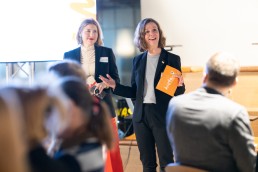
Community
Sharing insights on trends and emerging opportunities
This week leaders from the business & research community in the area met for the premiere of Kista Insight. A new meeting arena where trends and opportunities are showcased and discussed – this time with a focus on talent attraction, cybersecurity, and emerging opportunities within space.
Insight 1 - Space
Insight 1 - Space
”The number of satellites and activities in space is increasing exponentially, and this places new demands on the space industry. OHB Sweden is involved in developing a robotic “space claw” to clear space from waste by gripping debris and steering it back into Earth’s atmosphere, where it would safely burn up.“ Fredrik Sjöberg.
Fredrik Sjöberg from OHB Sweden highlighted the emerging opportunities with a growing space economy illustrated by the journey of Mats, the satellite.
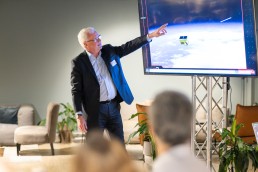
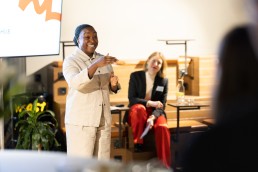
Insight 2 - Talent
Insight 2 - Talent
“Embrace the future – the majority of tomorrow’s jobs will be in tech! Let’s meet this demand head on, working together to cultivate the tech talents of today and tomorrow.” Binette Seck
Never stop learning! The world of tech is constantly evolving, but with the right steps, we can secure our place as leaders in the field. Binette Seck, founder of Changers Hub inspired to commit to lifelong learning.
True leadership means lifting those around us, especially young adults in the outermost regions. How to help them find inspiration and skills needed to thrive, to connect with role models and create the networks needed to have the faith to move forward.
Insight 3 - Cybersecurity
Insight 3 - Cybersecurity
“Cybersecurity is not only a technical matter. We need a multidisciplinary approach to meet the challenges of digitalization.” Kim Elman
Kim Elman, heading up the Cybersecurity center at RISE, talked about behavioral and economic perspectives of cybersecurity and commented on a historical absence of incitement to build secure systems.

Sharing knowledge and thoughts
Kista is becoming a national powerhouse for cybersecurity, where RISE Cybersecurity center is leading the way, but also supported by the strong research at Stockholm University, FOI, and several businesses with competence in the field.
Participants reflected on the need to balance between working operationally and strategically, between what we are doing today and what the future brings. The value of open dialogue and the importance of collaboration across company borders.
Kista’s international and diverse community is an excellent opportunity to showcase that we can be at the forefront of inclusion and diversity in the tech sector.
Kista Insight is a new arena for business leaders and researchers in Kista, a place to share insights from the ecosystem and create a forum for new relationships and collaborations. If you want to join the next meeting, reach out to Mikaela Färnqvist.
Shaping the future of mobility with AI and multisensors
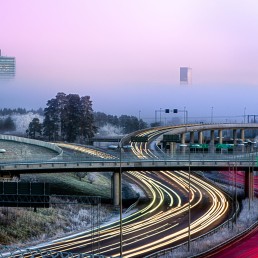
Smart City
AI and multisensors to improve urban mobility
There are today several technologies through which city traffic and pedestrian flows can be operated and manage. At the same time, and as a result of our increasing mobility behavior, cities face severe challenges with congestion, accidents and air pollution.
The utilization of sensing technology in our streets
The utilization of sensing technology in our streets comes with many possibilities, as sensing and imaging technologies are becoming advanced and collect data using various types of scanning cameras and sensors equipped with AI.
-We need to make transport smarter, more robust and more sustainable. And we also need to think about the public space, so that we make it more accessible, attractive and available for all the people. These tests are very important because we need a place where we can test new technology.” says Maria Holm, Project Manager at the City of Stockholm.
Viscando, Qamcom and Savantic are all involved in ongoing tests to promote better traffic flows based on real time data, using multisensor and AI technologies installed on the streets of Kista.
– Traditional ways of measuring traffic flows are usually based on induction lines under the road surface or on tubes laid on the streets. Our goal with the test in Kista is to evaluate whether existing technologies such as multisensors and AI-based based technologies, can provide better results and added value for the city planners, says Anna Chiara Brunetti, Project Manager at Qamcom.
– If we would be able to plan the public transportation system in a data-driven way, that would lead to much more attractive public transportation and a more sustainable city, says Claes Orsholm, Founder & CEO at Savantic.
Call for action
Are you too a Stockholm-based SME developing solutions with the potential to transform the automotive industry and transportation system? Would you like to demonstrate your solution to a wider audience, or test together with a potential business partner within the ICT or automotive sector? Please contact sara.nozkova@kista.com.
Intelligent traffic management
Multisensors is part of the focus area “Intelligent traffic management“, creating prerequisites for unique insights into current traffic flows. A process and phsysical place where businesses quick and effective can test and develop their tech and to compare solutions with other technology leaders.
Seeing through obstacles and around corners, the 5G Ride project rolls on
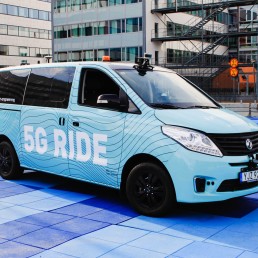
Drones
Seeing through obstacles and around corners, the 5G Ride project rolls on
The 2022 5G RIDE Demo Day on October 13 gathered more than 50 special invited guests and project partners who got a sneak preview of the latest technology updates.
This year’s demonstration focused on how new technology can be used to increase safety and security around autonomous vehicles in commuting traffic, hence offering a safer experience for travellers and other road users. The visitors got to experience how smart sensors on vehicles and in the surrounding infrastructure makes it possible for the vehicle to see through obstacles and around corners.
The sensors are an important addition to the project, as they measure positions and paths/route for all road users and sends this data in real time to Ericsson Innovation cloud, via 5G, where the data is processed, combined with other sources, and shared with the connected vehicle. The vehicle is acting upon the combined picture, from sensors, traffic tower, own cameras and the surrounding. In real time. During the demonstration we could see what happens if a person crosses the street if there is an obstacle on the path and how buildings and people are plotted on the onboard screens.
The technology enabling this is the 5G network and the traffic tower, as they fetch and share real-time data from the vehicle.
The ambition of the 5G RIDE project is to create conditions for an efficient and sustainable public transport where operators in traffic towers can support fleets of autonomous, electric vehicles to improve traffic planning, safety and reduce energy consumption. By taking a unified approach and combining technologies, the next step in the development of driverless automated vehicles is taken.
This project takes place in a collaboration between some of Sweden’s leading companies in mobility and technology. Kista Science City AB, Keolis, Ericsson, Telia, T-engineering, Viscando, Scania, Region Stockholm, intel and KTH. Working together to create a more environmentally smart and cost-efficient transport system.
For more information about the project
project manager Eleonor Sjödin Turah
eleonor.sjodinturah@kista.com
